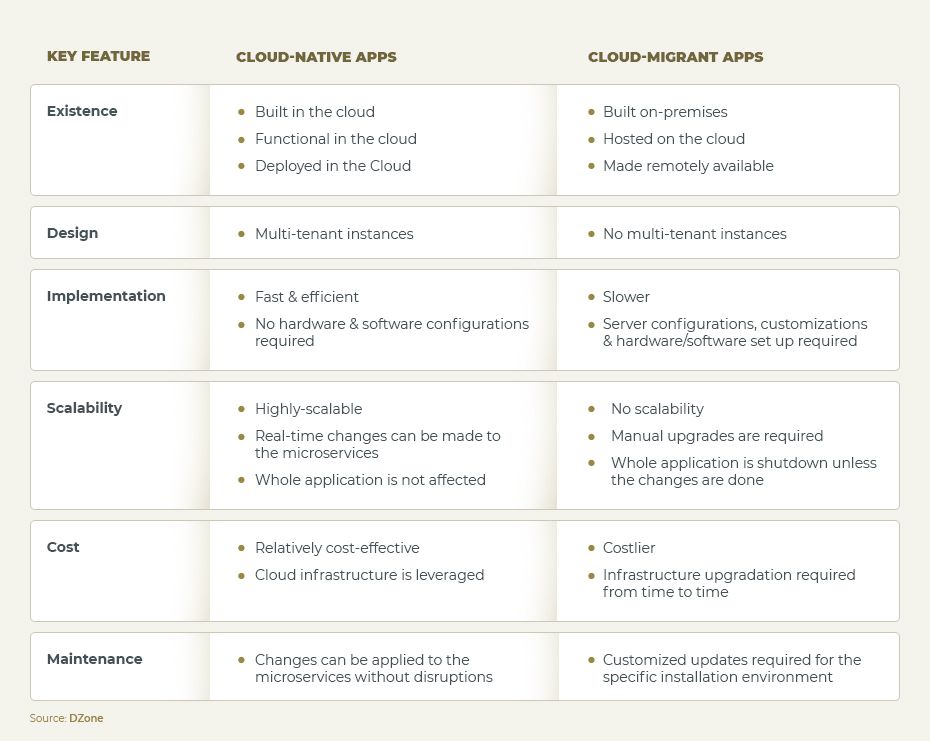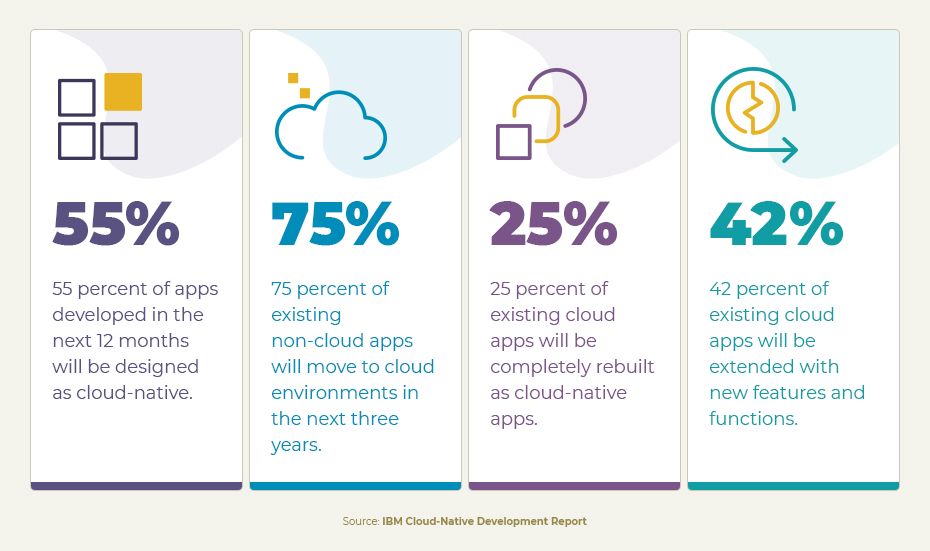Digital transformation is no longer an option, rather an imperative for businesses today! To achieve the speed, scale and flexibility required to succeed in the fast-paced and dynamic markets, businesses are embracing cloud-computing services.
However, to fully leverage the scalability and flexibility of clouds, a new form of application development is needed – the cloud-native approach.
As per the definition of the Cloud Native Computing Foundation, cloud-native technologies “empower organizations to build and run scalable applications in modern dynamic environments such as public, private and hybrid clouds.”
What are cloud-native applications?
Cloud-native applications, unlike traditional monolithic applications, are a collection of small, independent and loosely coupled services deployed in cloud environments.
In the “monolithic” application architecture, you build, update and repair an application as a single unit whereas in a cloud-native application you develop them as microservices – small applications wherein each perform a single service or business function.
These microservices communicate with each other via application programming interfaces (APIs) and you can maintain each microservice individually without impairing the function of the whole application.
Need to modernize and extend your apps?
Talk to our experts to move your apps to a cloud container environment!
This approach helps our software development teams to quickly add new features, improve or roll back functionalities without causing disruption to the whole application.
Thus, cloud-native applications help you to deliver business value by providing you the flexibility to quickly incorporate user feedback for continuous improvement.
How cloud-native applications differ from cloud-enabled applications? Let’s dig a little deeper to find out the basic differences between the two methodologies.
Key differences – Cloud-native vs. Cloud-migrant apps
While cloud-enabled or cloud migrant applications are on-premise applications tweaked to work in the cloud environment, they are not equipped to unleash the full benefits of cloud.
The cloud-native applications – built with cloud-specific mindset – help you to fully leverage cloud computing models and are also considered the future of application development.

How to embark on a cloud-native journey?
So, ready to make the most of cloud benefits? Are you keen on building applications that deliver faster time to market, superior customer experiences and higher scalability? And the best part is, you get all of these without any vendor lock-in!
So, your new cloud-native application (or any application development for that matter) must be driven and invoked by business events such as marketplace events, innovation, end user or client or customer interactions and the most important, it should serve your business needs.
Now, when it comes to technology and process, cloud-native comprises of four phases:
Architectural style – For cloud-native you have to structure your applications as a collection of loosely coupled services.
Microservices not only improve modularity and makes apps easier to develop & test, but also enable separate development teams to independently build, deploy and scale their services.
It also allows incremental automated and continuous improvement of your application without causing downtime.
You can enable microservices with serverless architecture which in addition to being cost-effective, helps developers to focus solely on revenue-generating functions leaving time-consuming non-value added infrastructure issues to the cloud provider.
Development process – The architectural style defines your development process and in this case we recommend adopting and implementing Agile practices.
The development process is split into smaller time windows in Agile which enables faster and more-effective development by providing a continuous feedback loop.
This allows you to quickly iterate your application based on user feedback and match to user expectations as closely as possible.
Production process – Adopting DevOps methodologies suggests that you are already equipped to support the adoption of cloud-native development practices in your enterprise.
This methodology focuses on speed and automation, that is, how rapidly you can move a project from design stage to production stage by minimizing the human involvement in the production process.
Thus, you can set up a production environment within days or hours instead of weeks or months required in traditional production processes.
See also: DevOps and Cloud: The Synergy Driving Digital Transformation in Enterprises
Execution platform – By extending its support to various architectural & deployment styles, Cloud becomes the most flexible delivery platform available today.
From traditional monolithic systems to nimble clusters of containers to large serverless functions or virtual-machine deployments, Cloud allows organizations to derive maximum business benefits.
However, the cloud-native approach helps you to get the maximum benefit and value from the cloud and delivers scale, resiliency and agility to your development teams and your business as well.
Planning to build your enterprise app with cloud-native model?
Talk to our experts to create greater business agility!
Before we move on to some of the benefits of cloud-native let’s take a look at these intriguing stats to imagine how the future of cloud-native would look like:

Key benefits of cloud-native architecture
The primary benefits that your enterprise would harness by adopting a cloud-native development strategy are:
Speed: Cloud-native approach makes the herculean task of meeting all the compliance requirements in a short time possible for organizations.
Besides making the development process faster, it improves the software development lifecycle by taking care of issues like bugs and slow loading speed.
Scalability: Cloud-native architecture enables scalable development process without interrupting the whole application. It thus, manages variable costs and supports an increasing customer base.
Cost-effective: As serverless is a cost-effective method of enabling microservices and deploying applications, cloud-native allows you to use your time to focus on other revenue-generating functions.
Automation: Adoption of Agile practices and DevOps methodologies in your enterprise lay the foundation for cloud-native and help you to save IT costs by delivering apps faster than before.
Focus on deliverables: Cloud-native empowers your development team to focus on essential business requirements rather than wasting time over infrastructure details. Apart from allowing remote access to their system from any location, it brings speed in the development process and enhances productivity.
Enhanced flexibility: Cloud-native approach offers your enterprise the flexibility to run your applications on multiple platforms – public & private – without introducing major changes.
Summing up!
In this fast-paced business environment, cloud-native technologies not only help you to innovate faster but also react to marketplace events with more agility.
To harness actual business value from cloud-native approach, you would need to chain together different technologies, processes and services keeping cloud specifically in mind.
Are you ready to adopt cloud-native application development? For embracing this cloud-native model, be ready to embrace changes within your entire project lifecycle right from the inception to coding to testing to the deployment of your application.
Already using cloud-native architecture? Share your development experience with our readers by leaving your comments below.




